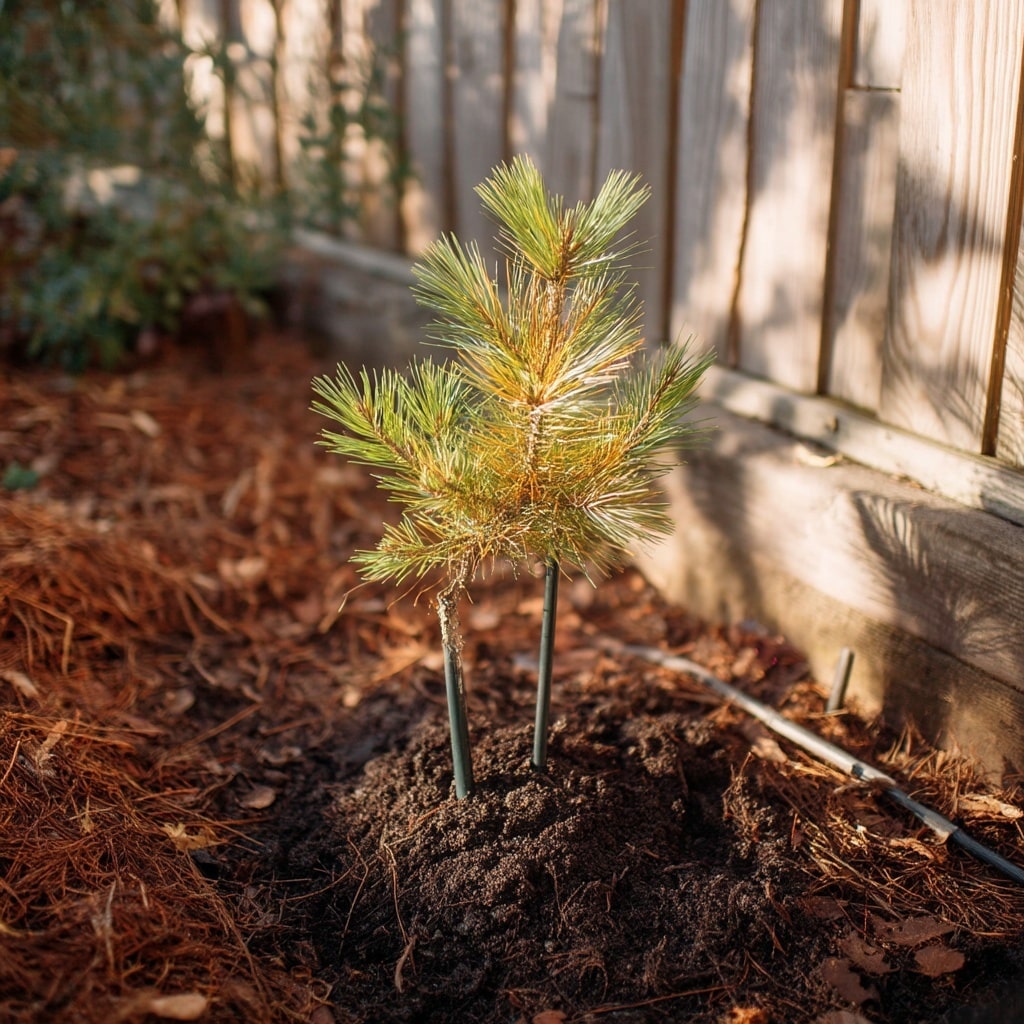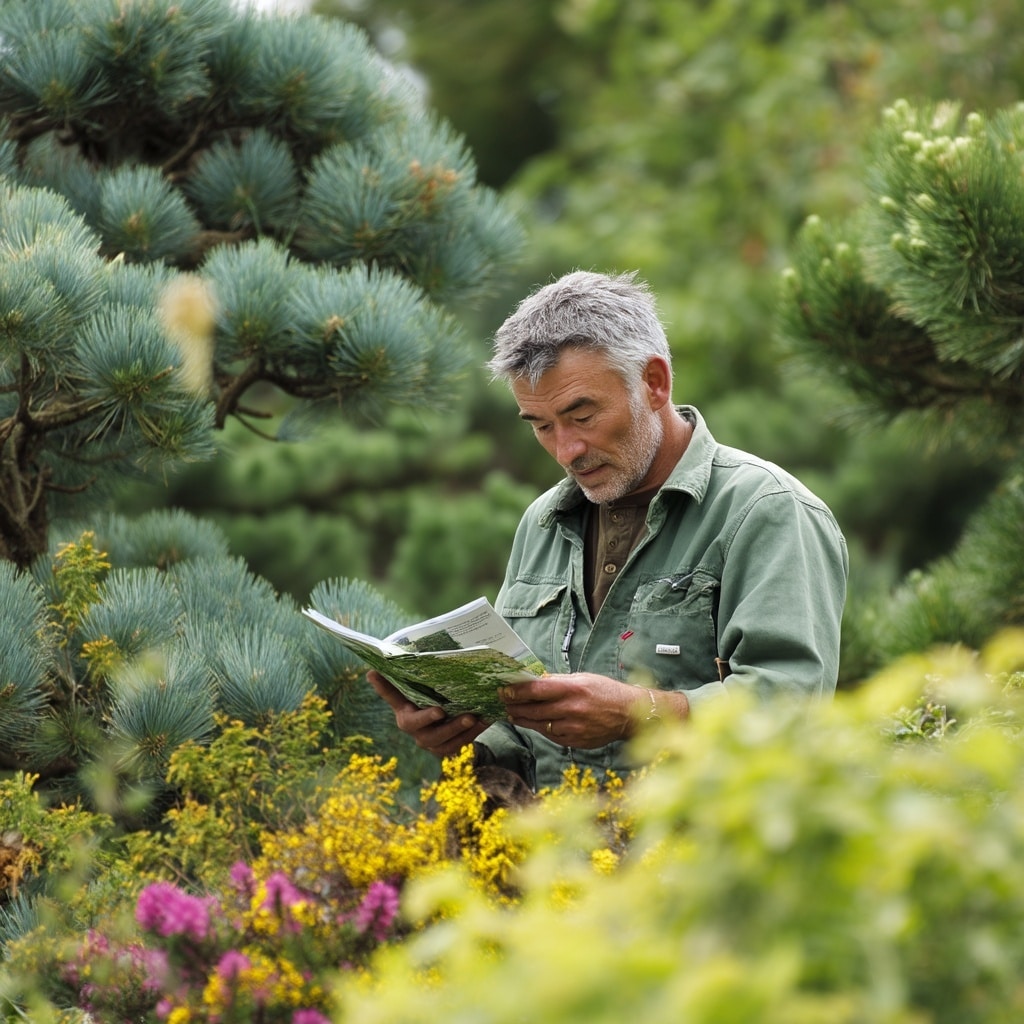Pine tree planting is one of the most rewarding ways to add beauty, structure, and long-term value to your landscape. Whether you’re working with a small seed or a nursery-grown sapling, planting a pine tree requires patience, the right timing, and proper technique. These evergreen trees offer year-round greenery, provide habitat for wildlife, and thrive in a variety of climates when properly established. In this guide, you’ll learn how to successfully plant a pine tree step-by-step, whether you’re starting from seed or giving a young sapling its forever home in your yard.
Table of Contents
How to Grow a Pine Tree from Seed
Starting a pine tree from seed is a slow but satisfying process that allows you to witness each stage of the tree’s development. This method requires patience and careful attention to detail, but it’s an excellent option for gardeners who enjoy the long game.
🌲 Step 1: Harvest and Test the Seeds
- Collect mature pinecones and shake them gently upside down to release the seeds.
- Drop the seeds into a container of water.
- Discard any that sink — they’re less likely to germinate. Keep only the ones that float.
🌱 Step 2: Store Until Planting Season
- Dry the viable seeds completely and place them in an airtight container.
- Store them in a cool place until the ideal planting season — typically late fall through early winter (December to January).
🪴 Step 3: Planting the Seeds
- Fill a small pot with well-draining soil and moisten it lightly.
- Place one seed just beneath the surface — pointy side down and vertical.
- Position the pot near a sunny window and water consistently, keeping the soil damp but not soggy.
🌞 Step 4: Monitor Early Growth
- Be patient — you may not see any signs of growth until early spring (March or April).
- Once pine needles appear, they’ll naturally lean toward sunlight. Rotate the pot every few days to encourage straight growth.
🌿 Step 5: Transplant the Seedling
- When the seedling reaches 6–12 inches tall, move it to a larger container (such as a 1-gallon pot).
- Transition it outdoors gradually — starting with partial shade, then full sun.
- When it outgrows its pot and temperatures are stable, plant it in a permanent spot in the garden.
👉 Tip: Use a pine-friendly soil mix with good drainage, and avoid overwatering during the early stages.
How to Plant a Pine Tree Sapling

If you’re looking for quicker results, planting a pine tree sapling is the fastest way to establish a tree in your landscape. Saplings are typically sold with their root ball wrapped in burlap or contained in nursery pots, ready to be transferred into the ground.
🕳️ Step 1: Dig the Planting Hole
- Choose a site with full sun and well-draining soil. Avoid areas prone to standing water.
- Dig a hole that’s twice as wide as the root ball but no deeper than its height. This encourages roots to spread outward rather than downward.
🌳 Step 2: Handle with Care
- Always lift the sapling by the root ball, not the trunk.
- If the roots are wrapped in burlap, you can place it directly in the hole. Natural burlap will decompose, but synthetic types should be removed.
🌱 Step 3: Position and Fill
- Center the tree in the hole and ensure it’s standing straight.
- Refill the hole with native soil, gently firming it around the root ball without packing it tightly.
- Avoid adding fertilizers at this stage — young pine trees don’t need extra nutrients while establishing roots.
💧 Step 4: Water Well
- Water thoroughly after planting to eliminate air pockets and settle the soil.
- Keep the soil moist (but not waterlogged) for the first few weeks as roots establish.
👉 Tip: Mulch around the base with a 2–3 inch layer of organic material to retain moisture, but keep mulch a few inches away from the trunk.
Aftercare Tips for Young Pine Trees

Proper aftercare is key to helping your pine tree establish strong roots and grow straight and healthy. While these trees are relatively low-maintenance once mature, they do need support in the early stages.
🪢 1. Stake if Necessary
- If your tree is taller than 6 feet or you’re planting in a windy area, use stakes to keep it upright.
- Insert two or three stakes around the tree and tie soft, flexible straps loosely around the trunk.
- Avoid using wire or rough materials that could damage the bark.
⏳ 2. Monitor Ties and Supports
- As the tree grows, check the ties regularly to make sure they’re not cutting into the bark (a condition called girdling).
- Remove stakes after one growing season or once the tree stands firm on its own.
💧 3. Watering Routine
- Water deeply once a week during the first growing season, especially in dry weather.
- Reduce frequency as the tree matures and becomes drought-tolerant.
🌤️ 4. Sunlight and Mulching
- Ensure the tree receives at least 6 hours of full sunlight daily.
- Refresh mulch annually to suppress weeds and conserve soil moisture.
👉 Tip: Don’t prune your young pine tree unless necessary. Pines have a natural shape and typically don’t require much shaping early on.
Common Questions About Planting Pine Trees

📅 When is the best time to plant a pine tree?
Late summer to early fall — typically August through October — is the ideal window. Temperatures are cooler, moisture levels are stable, and the tree has time to establish roots before winter.
⛏️ How deep should I plant a pine tree?
Dig a hole that’s twice as wide as the root ball but no deeper than its height. Planting too deep can suffocate the roots.
⌛ How long does it take for a pine tree to grow?
Growth depends on the species. Some varieties reach maturity in as little as 9–10 years, while others may take 20–25 years to fully develop.
🌱 Is growing a pine tree from seed difficult?
Not at all — just slow. Expect several months of indoor growth before transplanting. With consistent care, many seeds germinate successfully.
🌲 Do pine trees need a lot of sunlight?
Yes, most pine species require full sun (at least 6 hours per day). Shade may slow growth or cause sparse foliage.
Conclusion
Planting a pine tree is a simple yet deeply rewarding project. Whether you’re nurturing a seedling or settling a sapling into your yard, the steps are easy to follow — and the result is a beautiful, long-lived evergreen that enhances your landscape for decades. With the right soil, sunlight, and care, your pine tree will grow strong, tall, and healthy through all seasons.


